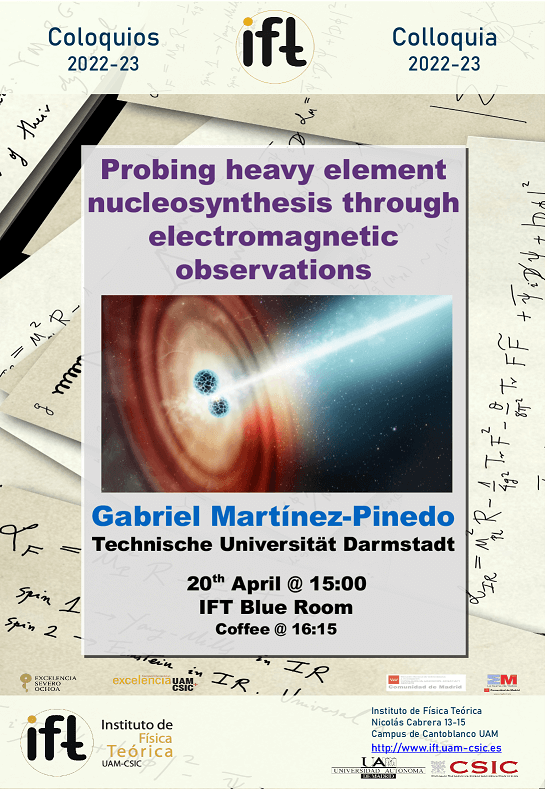SO(Colloquium).
Gabriel Martínez-Pinedo, GSI Helmholtzzentrum für Schwerionenforschung and Institut für Kernphysik (Theoriezentrum), Technische Universität Darmstadt.
Abstract:
Half of the elements heavier than iron are produced by a sequence of neutron captures, beta-decays and fission known as r-process. It requires an astrophysical site that ejects material with extreme neutron rich conditions. Once the r-process ends, the radioactive decay of the freshly synthesized material is able to power an electromagnetic transient with a typical intrinsic luminosity. Such kilonova was observed for the first time following the gravitational signal GW170817 originating from a merger of two neutron stars. This observation answered a long lasting question in nuclear astrophysics related to the astrophysical site of the r process. In this talk, I will summarize our current understanding of the r process and the answers provided by recent observations. I will also illustrate the unique opportunities offered by kilonova observations to learn about the in-situ operation of the r-process and the properties of matter at extreme conditions. Achieving these objectives, requires to address fundamental challenges in astrophysical modeling, the physics of neutron-rich nuclei and high density matter, and the atomic opacities of r-process elements required for radiative transfer models.
When: April 20, 2023, 3:00pm to 4:30pm
Location&Place: IFT Blue Room
